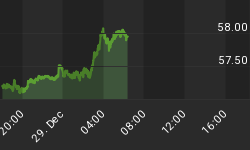A recent report by the Official Monetary and Financial Institutions Forum (OMFIF) entitled Global Public Investor 2014 discussed the investment strategies of 400 government investors split into 157 central banks, 156 government pension funds and 87 sovereign wealth funds, with $29 trillion at their disposal. We normally assume that government pension and sovereign wealth funds are invested to maximise returns and are not used for political and economic purposes, but the same cannot be said of central banks.
According to the OMFIF report the principal reasons central banks are now investing in a wider range of assets include an appetite for higher returns in a low interest rate environment, and geopolitical reasons, whereby stakes in foreign corporations are acquired for strategic purposes. However, central banks are the conduit for a government's financial management of an economy, and the function has been generally limited to setting interest rates, currency issuance and overseeing the expansion of bank credit. Foreign currency management and gold dealing have been grey areas, with these functions often managed by a government's finance ministry in an exchange stabilisation fund. So a central bank investing in equities is clearly a case of mission-creep.
Perhaps we should not be surprised that the Peoples Bank of China through its $3.9 trillion State Administration of Foreign Exchange Fund is acquiring equity stakes in European and other companies, but we should note that central banks, such as the Swiss, Danish and Italians are also investing significant sums in equities. Other central banks yet to buy equities will be watching with interest, and analysing the potential benefits of equity investment as an ancillary tool for managing markets.
It will be far easier for the Fed, the ECB or the Bank of England to buy equities if the trail is already blazed by other smaller and respectable central banks. Perhaps an analyst at the Bank for International Settlements will open the door by writing paper on the subject. Given the abject failure of monetary policy to stimulate the major advanced economies, surely it is only a matter of time before our "animal spirits" are kept alive with this new tool.
Equity bulls are unlikely to complain. If the ECB can help recapitalise the eurozone's banks by subscribing to capital issues, what's not to like? If a failing industrial conglomerate is given a new lease of life by a share support scheme paid for by a central bank, think of all the jobs saved at no apparent cost! By issuing government currency to support industrial investment, Keynes's dream explicitly stated in the conclusion to his General Theory can finally be realised, with the state replacing despised savers as the source of funding for industrial investment.
The acquisition of equities by central banks, government pension funds and sovereign wealth funds amounts to enormous power to sway markets the state's way; all that's required is a bit of inter-departmental cooperation and $29 trillion (and rising) can be fully utilised to this end. This intervention could increase until governments end up as significant shareholders in most major companies. Norway's Government Pension fund alone is buying 5% of every major listed European company.
So do not under-estimate the potential scope for further government intervention. Politicians and crony-capitalists will relish this new state-sponsored capitalism, which promises to tame bear markets and enhance share options. Unfortunately such idealist thinking is in defiance of economic reality with all the eventual consequences that entails.
















